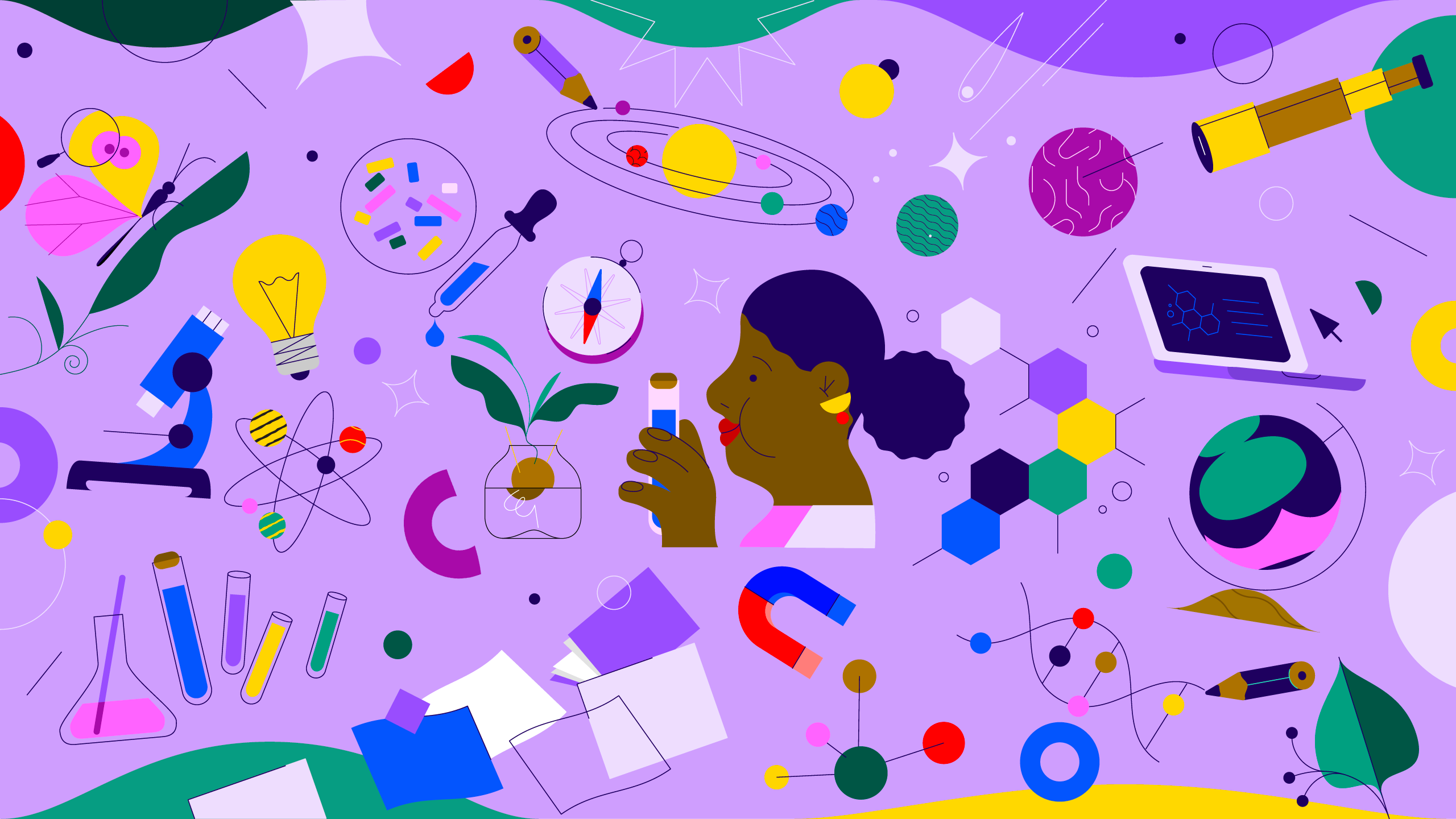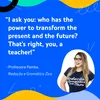World Teachers’ Day: Educators use YouTube to break down barriers to learning
Oct 05, 2022 – minute read

Oct 05, 2022 – minute read
Editor’s note: This story supplements May’s U.S. Teacher Appreciation Week post. Some creator responses edited for clarity, brevity and translation.
Today, October 5th, is World Teachers’ Day, held annually to honor all teachers and celebrate the daily impact they make for learners around the world. We asked a handful of educators to reflect on how YouTube plays a role in their ability to provide better learning experiences for more students.

In 2013, when five of Professora Pamba’s students could not afford to attend her prep courses in person, she initially planned to send them lessons via a flash drive. Instead, her husband suggested creating a YouTube channel and sharing the links with her students. Nine years later, Professora Pamba teaches Portuguese writing and grammar to nearly 2M subscribers on her channel Redação e Gramática Zica.

Halfway across the world in Japan, Haichi was a teacher at a “cram school,” or test-prep class typically reserved for middle-to upper-class families. He knew the impact financial implications had on education and that “income disparity leads to educational disparity.” So he began posting classes on his YouTube channel as a way to teach students who could otherwise not afford it.

For Mexican duo Maria Gonzalez and Alejandro Andalón, it was a geographical obstacle that served as the impetus for their channel, math2me.
In 2009, as a high school math teacher in Tijuana, Mexico, Alejandro wanted to help a group of students prepare for a math competition. But because his students were scattered across the state of Baja California, it was difficult for everyone to get together in person. So he joined with Maria to start uploading videos to YouTube as the solution — one that helped to erase borders and reach more students in need.

Likewise, UK EduTuber Jacob Mitchell shares the same passion for globalization. “I want to transform the world into my classroom,” he says. Jacob’s channel, MC Grammar, teaches through the power of music by uniquely rapping and rhyming to make learning exciting and memorable. “Thanks to YouTube, I can now connect with my audience at the touch of a button and take my raps, rhymes and music on a world tour every day.”
Still, after 10 years as a primary school teacher, Jacob admits that saying goodbye to the classroom and its daily relationships was one of the most difficult decisions he’s had to make. But it was the impact these EduTubers saw through their YouTube channels that kept them encouraged.
Soon after I delivered the links to these five students,” Pamba says, “ I noticed that the classes had hit hundreds of thousands of views.”
“Comments came from several students from various parts of Mexico and even the world,” Maria remembers.
“I started seeing students write things like ‘My grades improved’ and ‘I passed the school of my choice,’” Haichi shares.
Schools, in the format we know today, will be even more embedded in technology, as the next generations of students already have a natural digital profile”
Professora PambaThese types of feedback are one of the many reasons we recently announced updates to make educational content even more accessible for learners while helping learning creators thrive on YouTube.
Looking ahead, Professora Pamba believes that this is the natural evolution of education. “Schools, in the format we know today, will be even more embedded in technology, as the next generations of students already have a natural digital profile,” she says. More specifically, she sees a world where YouTube is naturally included in schools — whether videos are used to engage an entire classroom or asynchronously to suit an individual student’s needs.
This, in fact, is almost a reality in the US, where 96% of teachers who use YouTube said they use content from the platform in their lessons. Others, like Haichi, have a larger vision. “My dream is to raise learning on YouTube to the same playing field as schools and cram schools, and make it the third pillar that supports education,” he says. ”I see a future where a student asking, ‘Which video are you studying with?’ becomes as common as, ‘Which cram school do you go to?’”
We thank these four educators – and teachers around the world – for making learning better for students, so they can go further in the classroom and beyond.
During the week of World Teachers’ Day, you can find a related playlist on YouTube’s Learning destination.